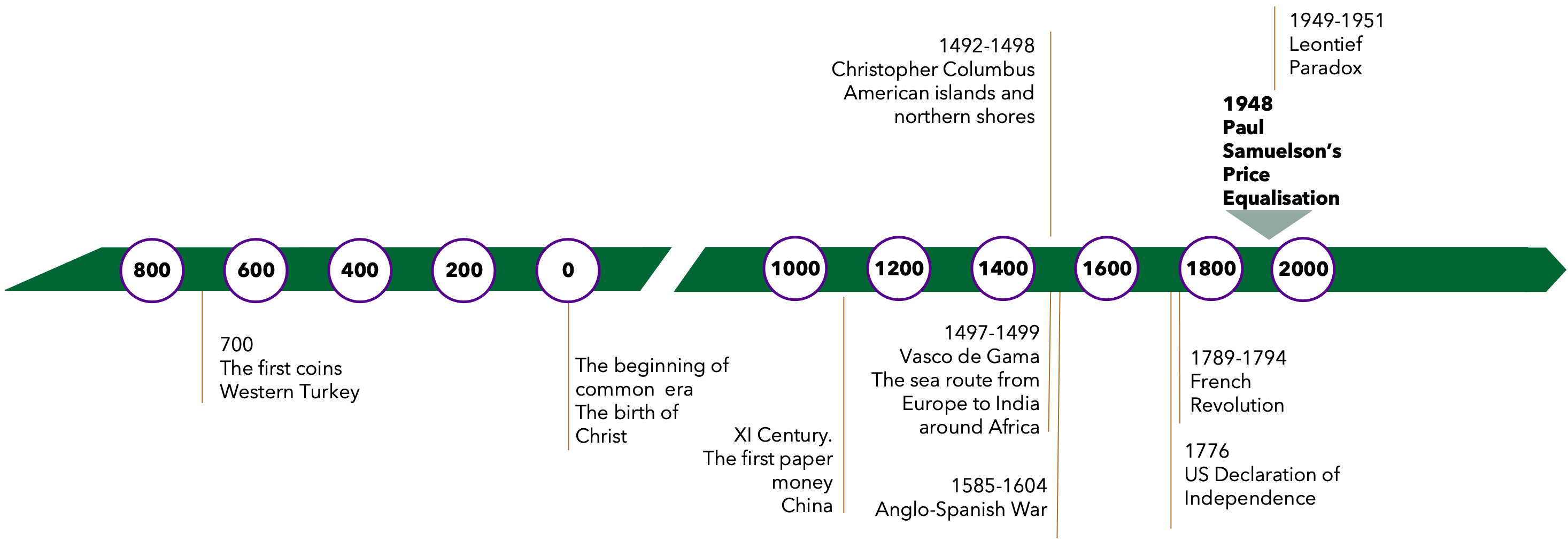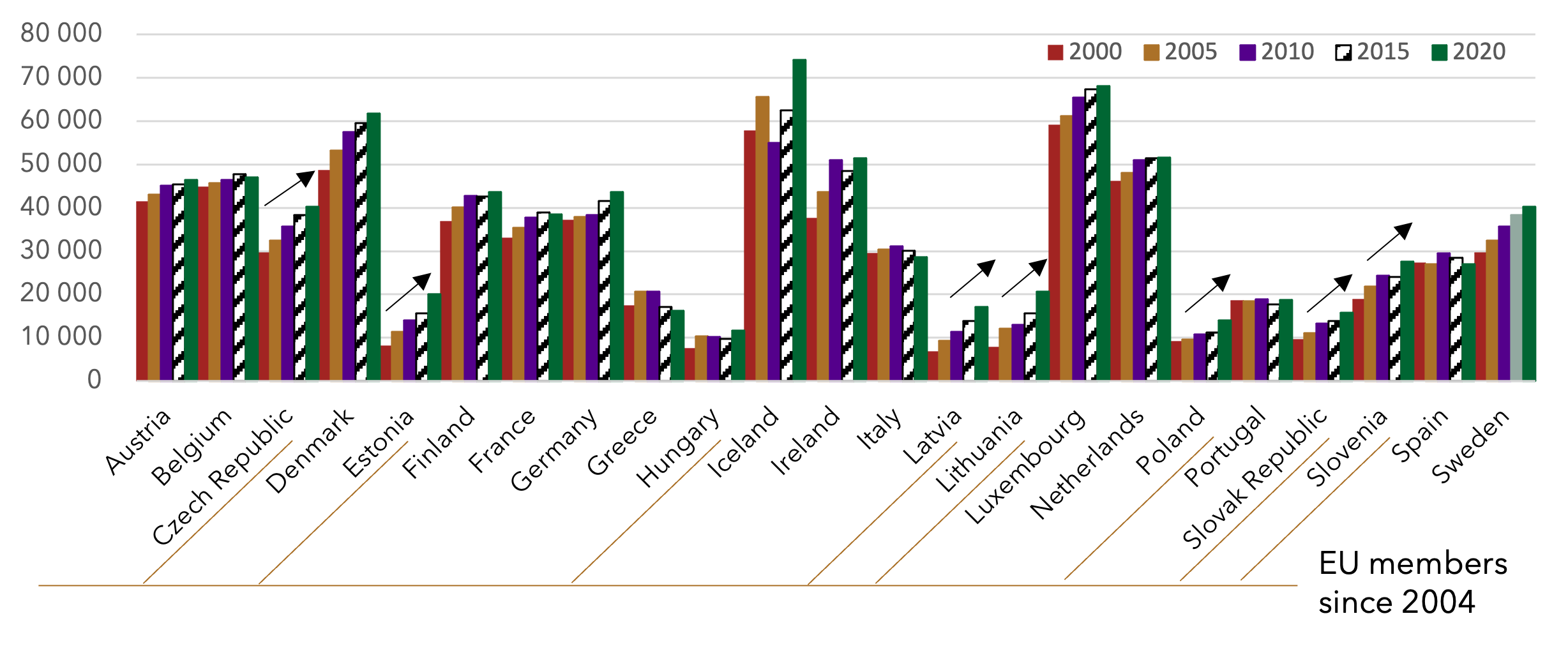This section explains how and why international trade leads to wage convergence between trading countries. Samuelson’s theory explains why and how the price of other resources becomes more uniform between trading countries.
Paul A. Samuelson proposed the resource price equalization theorem in 1948, which won him the Nobel Prize in 1970 (Exhibit 1-20). Paul A. Samuelson developed the Heckscher-Ohlin theorem, and his research showed that in the real world, in the absence of the restrictions imposed by the Heckscher-Ohlin theorem and in the presence of free trade and movement of capital and people, the theorem also works, but it leads to the equalization of resource prices between trading countries. This means that free international trade leads to equal pay for the same work and equal education, skills, and productivity for workers in all those countries that trade freely with each other. Paul A. Samuelson’s resource price equalization theorem (Samuelson, 1948) is used as a strong argument in favor of free trade and globalization (Samuelson, 1962).
Ex. 1‑20 Paul A Samuelson’s theory in the context of other historical events

Keywords: Price equalisation, Paul A Samuelson
It is believed that free trade and the free movement of resources will eventually make all countries and their populations equally well-off, reducing the gap between the living standards of rich and developed countries and those of developing countries (Samuelson, 1939). These ideas have been among a major stimulus to the formation of the European Union and World Trade Organization right after the World War II.
Ex. 1‑21 Trends in wage levels in EU / OECD countries

Keywords: salary, factor price equalisation
Paul A. Samuelson’s theorem of resource price equalization has been proved many times. The last example could be found more than 70 years later. The case of wage equalization in Europe is an excellent factual illustration of how the free movement of capital, labor and goods has had the effect of levelling the price of resources, namely wages (Exhibit 1-21).
In the case of the European Union, the method of equalizing the cost of capital should be mentioned separately. The Community has introduced a single currency, and many EU member countries have abandoned national currencies. The fluctuations in exchange rates and the strength of the currencies of individual countries against other currencies create differences in the cost of capital, i.e., differences in the interest at which capital is borrowed. With the creation of a single currency, the so-called eurozone, the cost of capital in the eurozone countries has become very similar, with the European Central Bank setting the base interest rates and interest rate differentials only due to the different interest rates of local commercial banks and market conditions.
Share or comment this information on your social media:
Fundamentals of global business
First edition
For citation:
Jarzemskis A. (2025). Fundamentals of global business, Litibero publishing, 496 p.

Full scope of the book is available in various formats
A.1 Theories of international economics
- Mercantilism
- Adam Smith and absolute advantage
- David Ricardo and Comparative advantage
- Standard theory of International trade
- Karl Marx and communism
- Hekscher – Ohlin theory
- Paul A Samuelson theory
- Leontief paradox
- Rybczynski theory
- John Hicks and progress
- Economies of scale theory
- Contemporary business internationalisation theories
- Questions for chapter review
- Chapter bibliography
About author
The author has been teaching at several universities since 2005. 40+ scientific publications, 10+ international research projects. More about author.